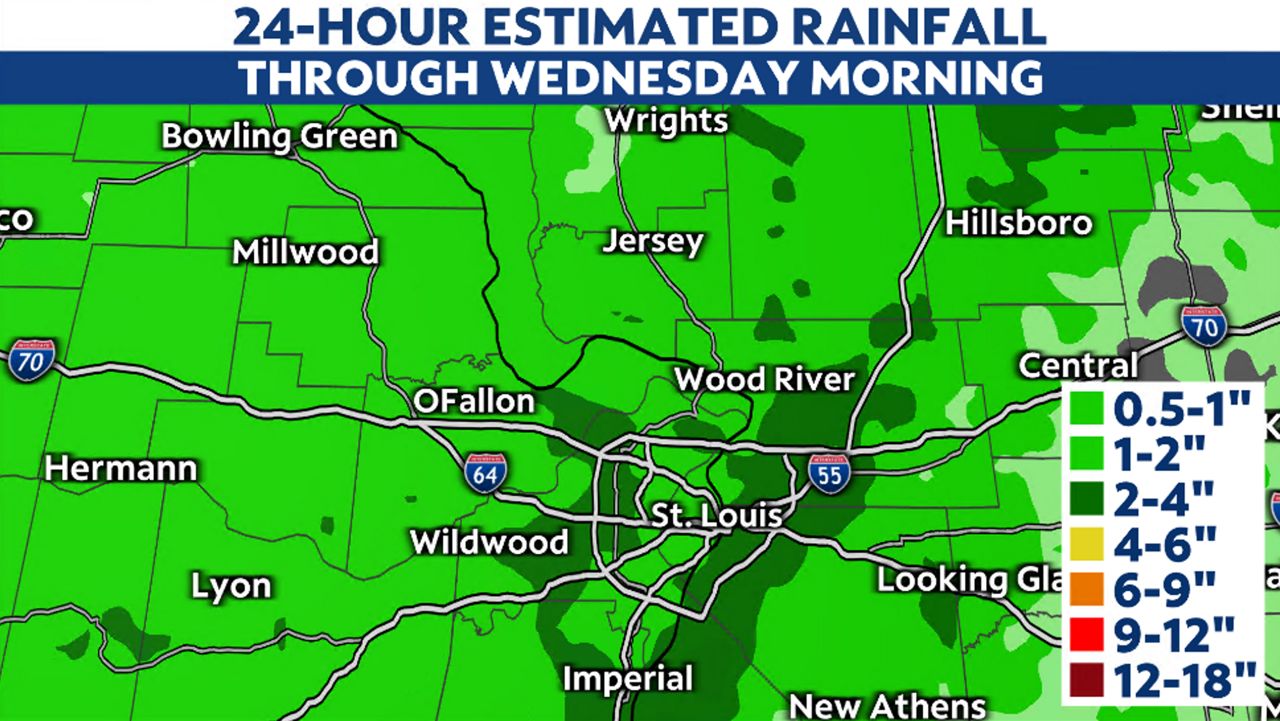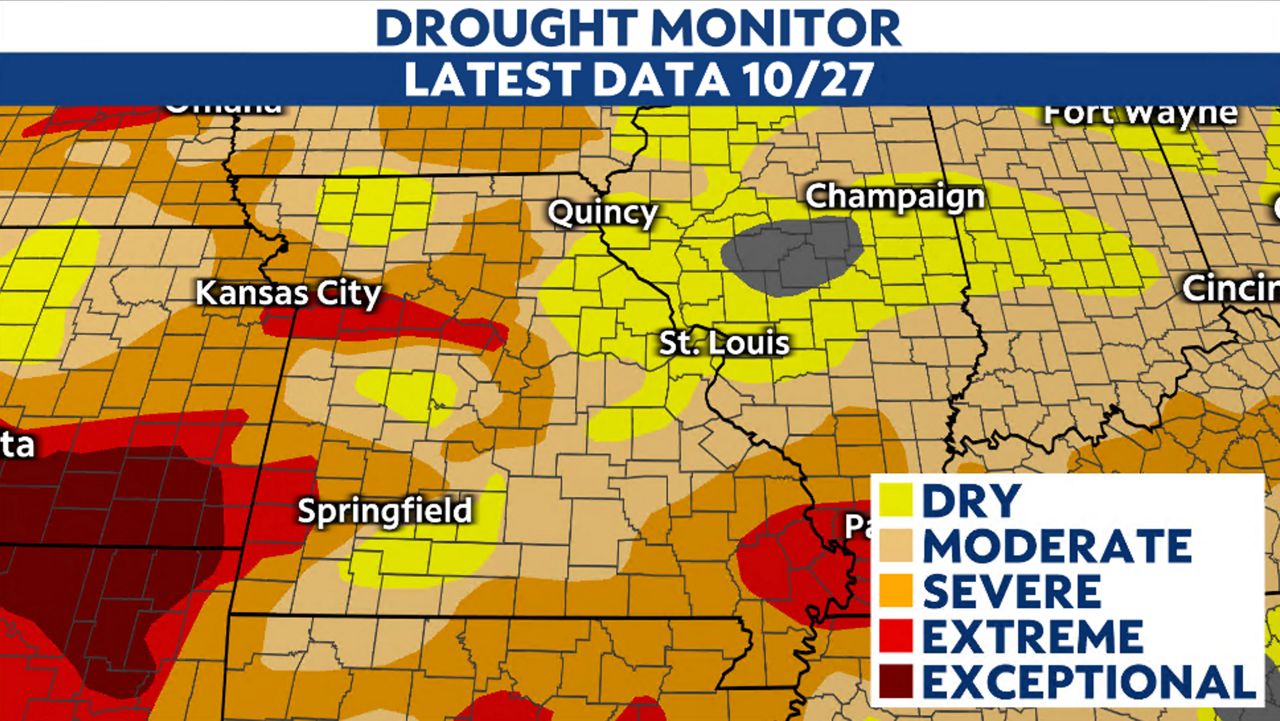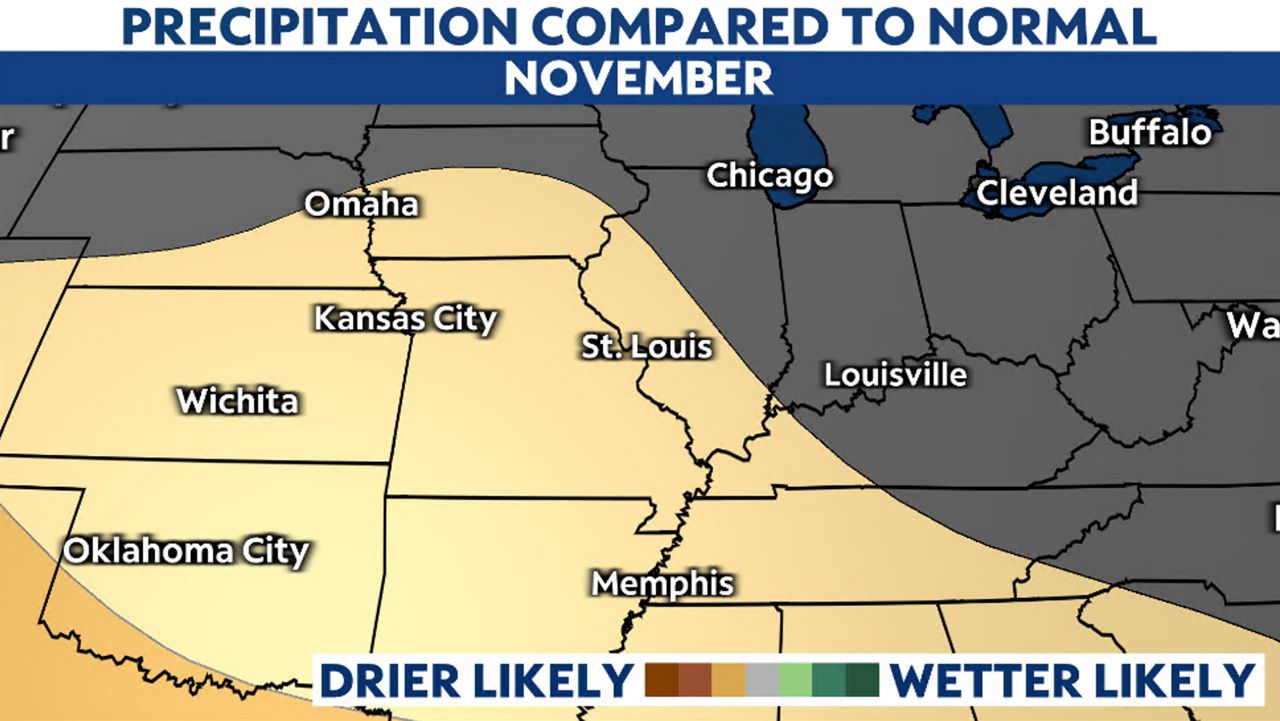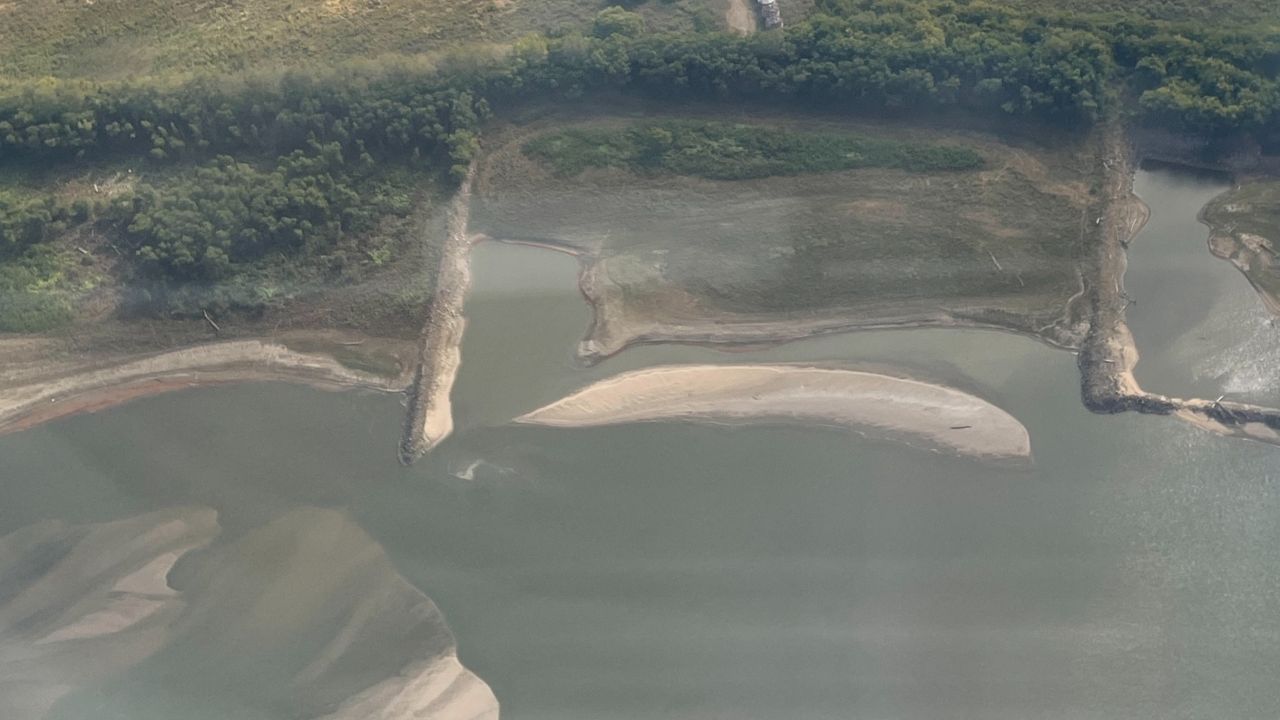ST. LOUIS – This past week’s heavy rain helped to ease some drought concerns, at least for the short term.
Areas around the St. Louis metro picked up two to even three inches or more of rain Monday night through Wednesday morning.
A storm system made its way northward across the region, bringing waves of rain with it. Despite high accumulations of rain, no flood concerns existed because of the dry grounds and expected prolonged steady rain event.

While this week’s rain proved beneficial, Senior Hydrologist Mark Fuchs, with the National Weather Service in St. Louis, explains that both the Mississippi and Missouri Rivers remain quite low.
As of Oct. 26, the Hermann gage on the Missouri stood at the 13th percentile of flows, meaning it has been lower only 12% of the time on this date. For the Mississippi at St. Louis, the recent rain helped the river rise to the 35th percentile of flow, still making it quite low. He adds, “It was much lower than that last Saturday.”
For several weeks, the water levels on the Mississippi dropped so low, people walked out on the banks of the river to physically touch Tower Rock, a giant limestone rock near Perry County, Missouri.
The recent rain has the Missouri Department of Conservation cautioning people not to access the geological formation by foot, with forecasts of the river to rise 3.5 feet.
The rain helped the region for now, but Fuchs says “we’ll need additional significant rainfall in the weeks ahead to keep us from returning to abnormal dryness and potential drought.”

While rainfall totals only tell part of the story, soil layers tell a different one.
Explaining, “It’s complicated. Different layers of soil tell different stories. Before this week’s rainfall, the top several inches of soil have been very dry, though deeper moisture remains, the result of record rainfall in late July.” Referring to the flooding event in July of this year, the monthly total exceeded 12”.
Low water levels have affected barge traffic along the Mississippi. Barges need sufficient water levels to move commodities, especially during times of crop harvests.
According to the U.S. Army Corps of Engineers, at the end of September, reduced barge traffic had already occurred with restrictions on unloading barges in New Orleans. Fuchs adds, “Barge companies have been asked not to load barges to maximum capacity to ensure safe passage.”
The Climate Prediction Center’s outlook for precipitation for the month of November displays a signal of drier than likely conditions. Normal November precipitation hovers around 3.5”. Looks like dry conditions and low river levels will persist for, at least, the next month.

Our team of meteorologists dives deep into the science of weather and breaks down timely weather data and information. To view more weather and climate stories, check out our weather blogs section.



